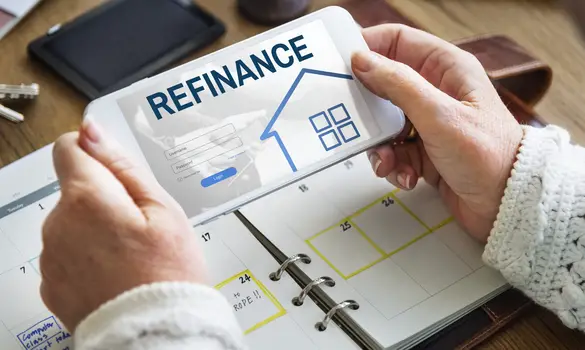
In the past, homeowners with low credit scores struggled to refinance their homes. They tried to learn how to refinance a home, but had little luck due to their poor credit history. Fortunately, homeowners today have better luck. As a homeowner with poor credit, you can still fulfill your dream to refinance your mortgage. Your credit could have dropped for numerous reasons. Perhaps a family member needed emergency medical treatment that simply did not fit into your budget, causing your late bill payments to pile up. You or your spouse could have lost your job. Regardless of the reasoning, you can still improve your financial situation by refinancing your mortgage. However, answer the question of “When should I refinance?” before beginning the process. If you decide that it is time to refinance, read this post to learn how to refinance a home with bad credit.
Contact Your Current Lender
To begin refinancing your home with bad credit, contact your current lender. Since they already have experience working with you, they might consider lending to you even with a poor credit score. If you have always paid them on time, they likely trust you. With this being said, they might overlook your bad credit. After all, you do include your loan-to-value ratio, debt-to-income ratio and current income in your application as well. Hence, if these factors seem promising, they have numerous reasons to accept your application. If your current lender does agree to work with you, you can avoid spending capital on transfer costs. For this reason, start your refinancing process off with a call to your current lender. Before committing to working with them, check that the refinance rate they are offering will really assist you in reducing your mortgage burden.
Prove Your Trustworthiness
If your current lender does not approve you, you need to prove your trustworthiness to other lenders. Since you need to convince lenders that they can trust you despite your poor credit, you need to put in ample effort. The easiest lenders to convince include those who base credit scores on positive financial behavior. If you put money into your savings account on a regular basis, for example, you might be able to impress them. Some lenders do not even consider credit scores. Keep your eyes peeled for them as well. Convince these types of lenders that you deserve the option to refinance your mortgage.
Consider Government Refinance Loans
Furthermore, consider the loan options that the federal government offers homeowners with bad credit. The government assists homeowners like yourself in minimizing your mortgage payments through different programs. Some of the most popular options include the Home Affordable Modification Program (HAMP) and the Home Affordable Refinance Program (HARP). Homeowners using HAMP reduce their mortgage bills. Those using HARP are typically more underwater and turn to the government for assistance. Keep these government refinance loan options in mind when trying to learn how to refinance a home.
Apply For A VA Loan
Veterans looking to refinance their homes with bad credit can apply for a VA loan. One of the most popular options is the VA interest rate reduction refinance loan (IRRRL). If you already have a VA loan, you can use this program to refinance it. Many veterans get approved for VA loans that allow them flexible funding. Veterans who meet the requirements succeed in refinancing these loans and mortgages. The requirements include a current mortgage, a lack of late payments within the last year and your lender needs to be FHA approved. If you meet these qualifications, you can refinance your mortgage without a home appraisal or an income verification. Veterans should carefully consider this option for learning how to refinance a home with bad credit.
Look Into FHA’s Streamlined Refinancing
Finally, look into the FHA’s streamlined refinancing program. Borrowers with FHA mortgage can qualify for this refinancing option. Moreover, they can qualify without having to offer credit information at all. You can even qualify if you have undergone bankruptcy or if you have recently lost your job. The FHA does not require you to submit a proof of income or proof of employment statement. However, keep in mind that you cannot cash-out with this refinancing option. You can only achieve a lower rate, shorter term or lower payment. Homeowners also need to stick to their mortgage payments. Look into FHA’s streamlined refinancing as a way of how to refinance a home.
Unlike in past years, homeowners like yourself can refinance a home even with bad credit. To kick-start the process, contact your current lender and inquire about getting a refinance loan from them. If they turn you down, prove your trustworthiness to other lenders who are much easier to convince. Consider the refinancing options the federal government offers homeowners with bad credit. Veterans can refinance their VA loans as well. In addition to the above refinance a home options, you can apply for FHA’s streamlined refinancing if you want to receive lower rates, a shorter term or a lower payment. Take all of these options into consideration in order to fully understand how to refinance a home with bad credit.
 Business First Family Business, Accounting, Finance, Investing, Marketing And Management
Business First Family Business, Accounting, Finance, Investing, Marketing And Management